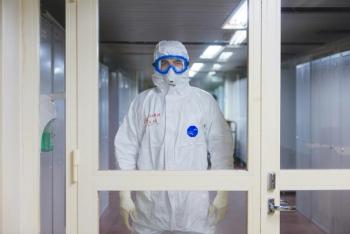
Screening and Isolation of C. difficile Carriers Can Lower Incidence of Infections
A new study shows that detecting and isolating Clostridium difficile carriers when they are admitted to hospitals can significantly reduce the incidence of new infections from the pathogen.
With the battle against healthcare associated infections seemingly under-armed against drug-resistant pathogens, the medical community is increasingly emphasizing preventive measures against the spread of “superbugs.” A new study shows that detecting and isolating
The
Apart from those with active infections, there are a number of people who are asymptomatic C. difficile carriers, having no symptoms of infection from the bacteria while still having the spores present in their feces. C. difficile colonization is more common than C. difficile infection. Because carriers can present a health risk to non-carriers in a hospital setting, the authors of this study wanted to investigate the effect of detecting and isolating C. difficile asymptomatic carriers at hospital admission on the incidence of healthcare associated CDI (HA-CDI). The
In this quasi-experimental study conducted in a Canadian acute care facility between November 2013 and March 2015, the researchers did rectal swabs on incoming patients to test for the presence of the toxin gene tcdB produced by C. difficile. A total of 7599 eligible patients were screened, with a total of 368 patients identified as C. difficile carriers through testing. Once identified, the carriers were placed under contact isolation precautions apart from non-carriers during their hospital stay. Over the course of the intervention period, 38 patients developed an HA-CDI. This was compared to a pre-intervention control period in which 416 patients developed an HA-CDI. The incidence rate of HA-CDI decreased by more than 50% to 3.0 per 10,000 patient days compared to 6.9 per 10,000 patient days before the intervention. Based on the researcher’s estimates, the intervention of testing and isolation prevented 63 of the expected 101 cases of HA-CDI.
The authors note that the findings need to be confirmed with additional studies, as the study was limited by the fact that it was only conducted at one center. Still, the research offers a promising preventive approach to curtailing the spread of C. difficile and reducing the number of these healthcare associated infections each year. “Detecting and isolating C. difficile carriers was associated with a significant decrease in the incidence of HA-CDI,” write the study authors. “If confirmed in subsequent studies, this strategy could help prevent HA-CDI.”
To prevent the spread of C. difficile in hospitals and healthcare facilities, the CDC
- Use antibiotics judiciously.
- Use Contact Precautions.
- For patients with known or suspected C. difficile infection: Place these patients in private rooms. If private rooms are not available, these patients can be placed in rooms (cohorted) with other patients with C. difficile infection.
- Use gloves when entering patients’ rooms and during patient care.
- Perform Hand Hygiene after removing gloves. Because alcohol does not kill C. difficile spores, use of soap and water is more efficacious than alcohol-based hand rubs. However, early experimental data suggest that, even using soap and water, the removal of C. difficile spores is more challenging than the removal or inactivation of other common pathogens.
- Preventing contamination of the hands via glove use remains the cornerstone for preventing C. difficile transmission via the hands of healthcare workers; any theoretical benefit from instituting soap and water must be balanced against the potential for decreased compliance resulting from a more complex hand hygiene message.
- If your institution experiences an outbreak, consider using only soap and water for hand hygiene when caring for patients with C. difficile infection.
- Use gowns when entering patients’ rooms and during patient care.
Newsletter
Stay ahead of emerging infectious disease threats with expert insights and breaking research. Subscribe now to get updates delivered straight to your inbox.























































































































































































































































































































